Reflective Amplifier
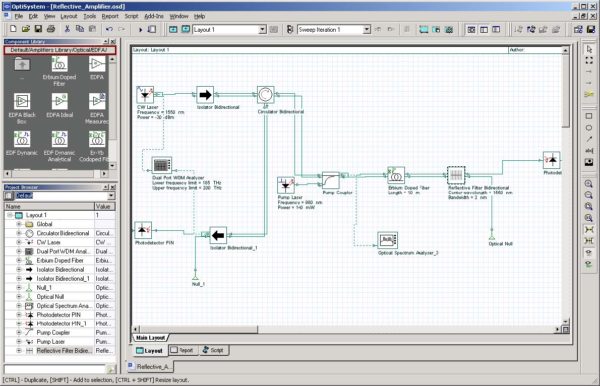
In Reflective EDFAs, a device (e.g. mirror, grating) is placed at the EDFA output end to reflect whether the pump or the signal (double-passing the pump or signal through the EDFA) produces a net gain enhancement. There are three basic configurations: EDFA with reflected pump only EDFA with reflected signal only EDFA with reflected pump…
Split-Band Amplifier
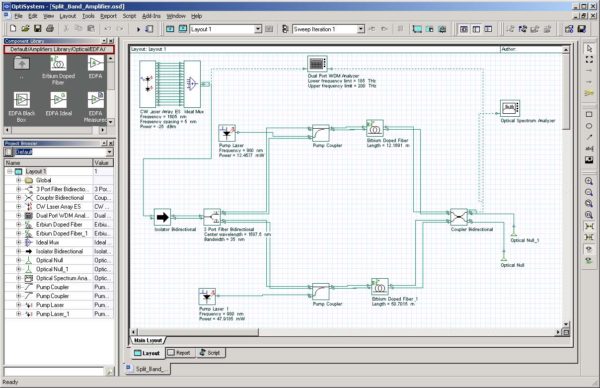
The gain peak shifts to longer wavelengths as the fiber length increases and the population inversion decreases. The bandwidth of an EDFA can be increased by separating the gain spectrum into two bands, 1530-1560 nm and 1570-1610 nm, with a band-splitting filter. The gain can then be optimized in the two regions separately. Loading the…
Dynamic Amplifier Using Ytterbium-Doped Fiber
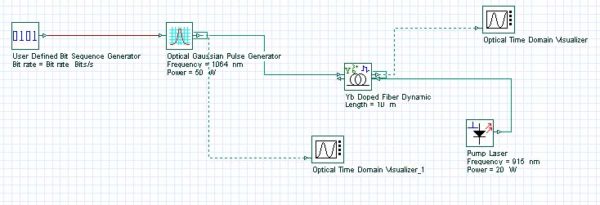
The objective of this lesson is to demonstrate the amplification of a sequence of Gaussian pulses by an ytterbium-doped fiber amplifier using the dynamic model. To analyze the dynamic characteristics of the high-power ytterbium-doped double-clad fiber amplifier considering pulses in repetition rates of KHz, a dynamic ytterbium-doped fiber model is necessary. In this case, a…
Gain Flattening Filter Optimization
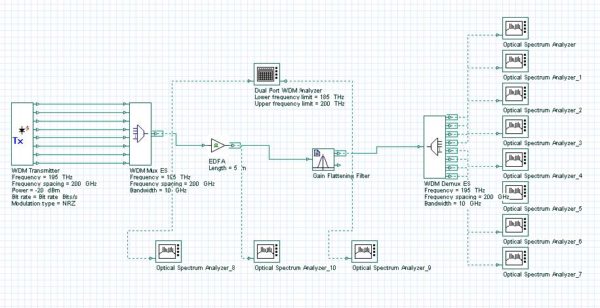
EDFAs have a wavelength-dependent gain; i.e., some wavelengths are amplified more than others. A gain flattening filter restores all wavelengths to approximately the same intensity. Project Gain Flattening Filter Optimization.osd demonstrates the gain flattening filter optimization engine that is included with OptiSystem. The system layout is presented in Figure 1. The WDM Transmitter generates eight…
Amplification of multiple modes in Er-doped multimode fibers
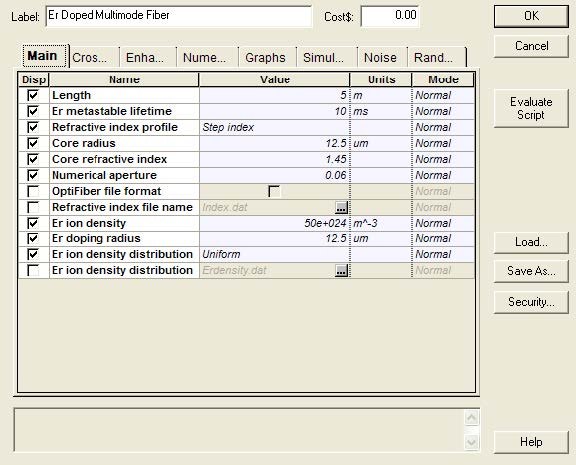
The Er-doped Multimode Fiber component was designed to allow the analysis of multiple modes amplification in large mode area fibers. The components are very similar to the original single-mode doped fiber amplifiers, however now the refractive index information and ion distribution profile can be defined by the user (see main tab parameters in the figure…
S-band amplification using Tm-DFA
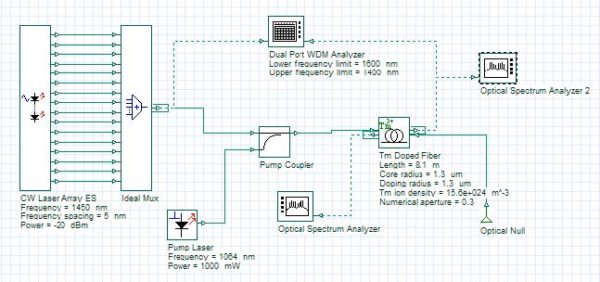
The system designed amplifies a set of 16 channels in the S-band going from 1450 nm to 1525 nm. Three different amplifier lengths are simulated and the gain curve is plotted in the report page. Sample: MODB_ModulationSystem.osd Figure 1: Thulium-doped fiber amplifier layout. Figure 2: Gain curves for 2.4 m (black), 7 m (red), and…
Ultrashort Pulse Fiber Laser
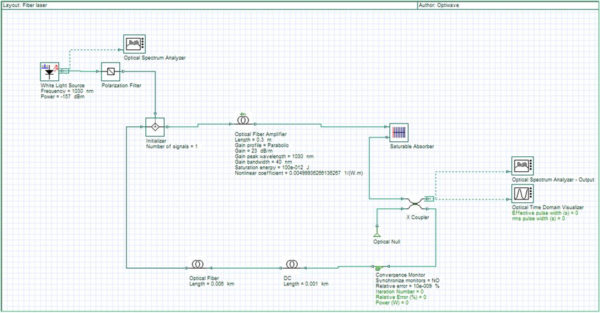
The system demonstrates a fiber laser, based on passive mode locking using a saturable absorber, capable of producing ultrashort pulses Sample: UltraShortFiberlaser.osd The system layout presented in the figure below is a unidirectional ring cavity composed of an optical fiber amplifier (here represented by a gain fiber numerical modeling that is emulating an ytterbium-doped fiber),…

